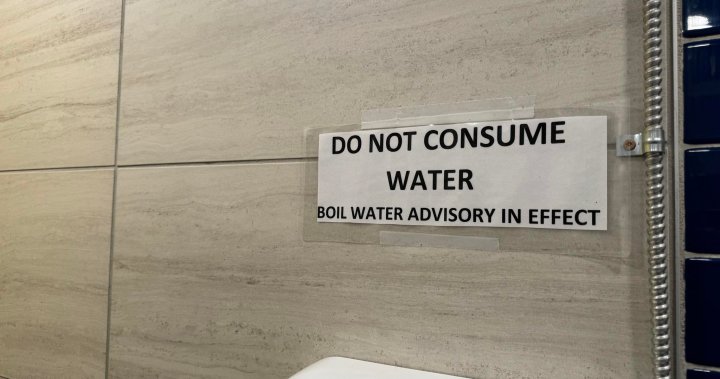At least five of nine intimate-partner homicides in northwestern Ontario over a five-year period involved Indigenous victims, according to a CBC News investigation — but the issue is something healing and support workers in the region have been approaching with urgency for decades.
The regional findings are part of a 16-month investigation that looked at 392 cases of intimate-partner homicides across Canada between Jan. 1, 2015, and June 30, 2020. On average, it found one in five victims in the country was Indigenous in cases where CBC News was able to identify the ethnicity of the victim.
Statistics Canada, however, reports that number is higher — one in four — due to limitations within the data released by police and courts to CBC News.
The findings are also consistent with other research into violence involving Indigenous people.
For instance, the report into missing and murdered Indigenous women and girls (MMIWG) noted “extremely high” rates of domestic and family violence, and issued urgent calls for more resources and programs to prevent further victimization
A long history of activism in Thunder Bay
Marlene Pierre, an elder in Fort William First Nation, has been part of the healing efforts since the 1980s. She says governments have failed to address the issue of domestic violence, despite reports indicating the extent of it.
She points to the “Breaking Free” report, issued by the Ontario Native Women’s Association in 1989 in Thunder Bay, which looked at the extent of family violence in Indigenous communities, and proposed solutions to what was then described as “an epidemic.”
Pierre said the results of the report were concerning. Eighty per cent of respondents had personally experienced family violence, and nearly one-quarter of those surveyed said they personally knew cases of family violence that had resulted in death, “most frequently, to the women.”
Pierre said the high level of violence is linked to colonial policies and practices — like residential schools, the Sixties Scoop, the child welfare system and birth alerts, and Canada’s Indian Act, which only conferred status to women through marriage.
“It was a very divisive method of controlling our families and breaking down our families,” she said, referring to the Indian Act.
The Breaking Free report said family violence is also rooted within the context of other social problems like poverty, substance use, homelessness and incarceration, which disproportionately affect Indigenous people.
Elder wants more access to programs, services
But in the decades since that report was released, Pierre said, successive federal and provincial governments have failed Indigenous people.
“They have not done enough.”
Pierre advocates for greater access to a wide spectrum of programs and services addressing family violence.
Cora McGuire-Cyrette, executive director of the Ontario Native Women’s Association, said an important step would be to reinstate the Aboriginal Healing Foundation, an Indigenous-led organization established in 1998 to co-ordinate a comprehensive response to the legacy of residential schools and associated community health impacts.

Funding for the organization lapsed in 2014, leaving a big gap in administering a comprehensive healing plan, McGuire-Cyrette said.
“Many people tend to break it down to an individual act [of violence] when they see it in the news, but it’s actually systemic,” she said. “If we don’t address it systemically, we’re not going to make an impact.”
Restarting the foundation and providing core funding is a good start, McGuire-Cyrette said, but a range of programs that provide holistic healing is also needed.
It takes a community to prevent violence
There’s also an emphasis on raising awareness about violence and ways to prevent it.
That’s why the Ontario Federation of Indigenous Friendship Centres runs the Kanawayhitowin program, said Beth Boros, training director for the organization.
We all have this responsibility to remove the silent stigma and shame surrounding violence.– Beth Boros, training director for Ontario Federation of Indigenous Friendship Centres
Kanawayhitowin is a Cree word that roughly translates to “taking care of each other’s spirit.”
The program raises awareness about the warning signs of abuse and provides information about safety planning for at-risk women, while empowering Indigenous men to take an active role in ending the cycle of intergenerational and interpersonal violence.

“It recognizes that we all have this responsibility to remove the silent stigma and shame surrounding violence,” Boros said.
But, she added, that awareness and cracking through the silence is only one piece of the puzzle to healing Indigenous communities.
Increasing access to crisis shelters, services
Beendigen is one of several Indigenous-specific crisis homes in the province that provide a range of supports to women and children in crisis, according to program manager Katie Bortolin.
When it opened in Thunder Bay in 1978, the home was primarily a shelter with beds and food. Over the years, the agency expanded to include a 24/7 crisis line, counselling, and supports for addictions and human trafficking.
“We follow a proactive approach instead of a reactive approach to intakes, which means you don’t need to have an active abuser,” Bortolin told CBC News.
“If you are living on the streets, if you are homeless, you don’t have any safe place to go, we recognize that is high risk and we will offer you support.”
To further reduce barriers, Bortolin said, the organization has shifted to a harm reduction model, and that includes no longer requiring women to be sober 24 hours before entering the shelter.
“We’re full all the time,” she added.
Incorporating Indigenous culture into family healing
More crisis and safe houses are needed, Pierre said, especially in smaller, remote and rural communities.
Indigenous people and families also need to reconnect with their culture, as part of healing from intergenerational trauma and violence, she added.
That work is happening at the 12-bed Biidaaban Healing Lodge, a few hundred kilometres east of Thunder Bay near the shores of Lake Superior in Robinson-Superior Treaty territory, according to executive director Simone Desmoulin.

Inside the lodge, a wall is covered with multi-coloured handprints — names, dates and short messages wrapped around palms and fingers.
“It’s a testament to the people that have journeyed with us. Every graduate that has left from our residential programs left a part of themselves through their handprints on the walls,” Desmoulin said.

The lodge offers a range of programs that help people heal from anger, grief, abandonment and sexual violence. Desmoulin said “the high majority of the families that come through are involved in family violence.”
In their community-based work around reducing intimate-partner violence, Desmoulin said, they sometimes have to empower people to make decisions if abusive relationships don’t change. But she added, they often focus on healing the family unit.

One initiative at the lodge welcomes families for a drum-making workshop, as a way to heal from intergenerational trauma
“They get the teachings around that drum, but they also learn to work together as a unit to create their family drum,” Desmoulin said. “And from there, it gives them a sense of pride in their accomplishments as a family, and as they sit, and learn and beat on that drum.”
They give a lot of words, right? Words, words words. But not enough action.– Marlene Pierre, elder and justice activist from Fort William First Nation
On their own, these programs can’t address disproportionately high levels of intimate-partner and family violence, Pierre said.
But together, along with adequate investments in Indigenous health and well-being, they will make a difference, she said.
Pierre said work to heal Indigenous communities must continue to be led by Indigenous women, and governments need to provide adequate support.
“They give a lot of words, right? Words, words words. But not enough action.”
Support is available for anyone affected by intimate partner violence. You can access support services and local resources in Canada by visiting this website. If your situation is urgent, please contact emergency services in your area.







More Stories
Air Canada apologizes to national chief after flight crew took her headdress away | CBC News
Princeton, B.C. close to having multi-year boil water notice lifted | Globalnews.ca
First Nation in Ontario declares state of emergency over discharge from nearby plastics plant | CBC News